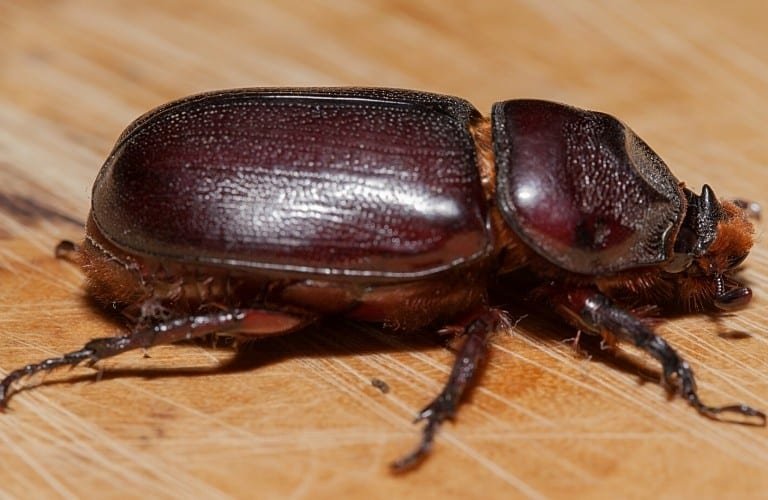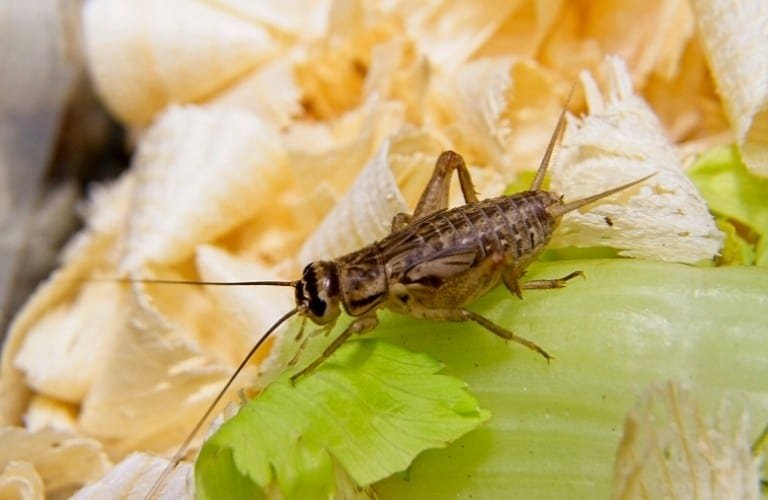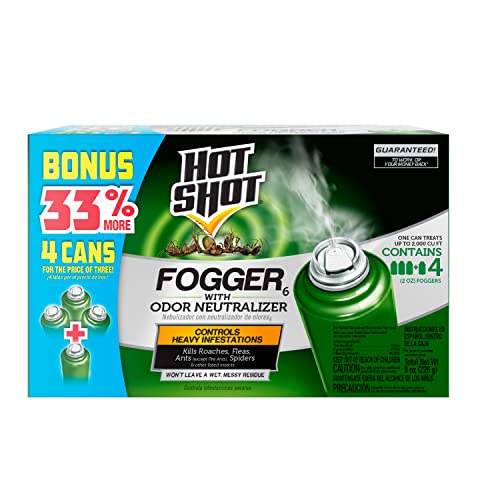Most people are familiar with adult cockroaches and know that spotting several usually indicates that it’s time to take action.
What does it mean if you happen to spy a baby cockroach? Is it just passing through, or is it a sign of a growing roach infestation?
Do baby roaches mean infestation? The presence of baby roaches does indeed indicate an infestation, one that could grow exponentially if not eliminated swiftly. For every baby roach seen, there are likely dozens, perhaps hundreds, of others hiding, not to mention a multitude of adults.
Baby roaches carry the same risks as the adults do, but they also mean that the roaches have set up shop, so to speak. If you find baby roaches in your home or business, you will need to act fast to control the infestation.
In the following, you’ll learn how to tell for sure whether the bug you spotted is a roach or not and what your options are for wiping out the invasive population.
You’ll find more information on roaches, key prevention tips, and elimination strategies in our lineup of roach articles. Click here to see them all.
What Do Baby Cockroaches Look Like?
So, what do these little buggers look like? Though there are distinguishing features for each species, baby cockroaches look largely similar to the untrained eye.
Baby cockroaches of all species share qualities like:
- Long, thin antennae: Antennae are the multifunctional sensory organs used to interpret the environment. Roaches’ long, thin antennae are used to smell, to feel, and to sense temperature and humidity levels.
- Two cerci: Cerci are the small appendages at the base of roaches’ bodies. They are used to sense vibrations in the ground or the air, functioning much like secondary antennae.
- A flat, hard shell: Baby roaches, like adults, had a flat, hard, oblong shell. Unlike adults of some species, no baby cockroaches have wings.
- Six spiny legs: Like all insects, roaches have three pairs of legs. The spiny protrusions on roaches’ legs allow them to scuttle up, down, and across walls, ceilings, and floors.
What Type of Roach Did I Find?
There are 30 or so roach species associated with humans and human activity. Of the many species of cockroaches found near humans, you’re more likely to encounter some species than others in your home.
Commonly found species of baby cockroaches include:
- German cockroaches: These have brown, dark brown shells with darker stripes running along each side of the abdomen. They are approximately 6 millimeters long before their first molting.
- American cockroaches: These appear rusty or reddish brown. Upon close inspection, an alternating pattern of light and dark bands across their backs will be seen. Babies are about the length of a penny’s diameter, 2 centimeters.
- Oriental cockroaches: These have medium-length antennae and a red-brown abdomen with distinct dark and light bands. They are approximately 6 millimeters before their first molting.
- Brown-banded cockroaches: These have long antennae and are dark brown with an orange abdomen. Distinctive pale bands run across their bodies. Nymphs are only about 3 millimeters. They prefer warmer climates and can’t lay eggs in temperatures below 59℉.
When any of these species molt, they will appear solid white until they regrow their exoskeleton.
What Bugs Look Like Baby Roaches?
Because bugs share many features, it’s easy for the average person to mistake one for another. Baby roaches are no exception and are commonly confused with a number of other bugs.
Harmless Beetles
The squat, oblong frame that most beetles have makes it easy to misidentify a dark or reddish-brown one as a baby roach, or vice versa. Beetles, though, have shorter legs and antennae and are much slower-moving than baby roaches.
Crickets
Because of their spiny legs and similar color (depending on species), some people confuse small crickets with cockroach babies. Crickets are known for their chirping and for jumping high, neither of which can baby roaches do.
If you discover that the bugs you’re dealing with are crickets rather than roaches, we cover cricket problems and solutions here.
Bed Bugs
Bed bugs are reddish-brown, have similar cerci, and are wingless, and as such, they are often mistaken for baby roaches. However, they are typically shorter and rounder than baby roaches and have much shorter antennae. Bed bugs are notorious for biting (and feeding on) people, while roaches rarely bite humans.
Bed bug infestation is a whole other problem entirely, requiring immediate action to avoid damage to persons and property.
Click here to learn more about bed bugs and the best way to rid your home of these nasty pests.
How Many Babies Do Roaches Have?
Though you may only see one or two baby roaches at a time, it’s important to know that cockroaches reproduce quite rapidly, and there are likely dozens more right around the corner.
Roaches, like other insects, reproduce by laying eggs.
Cockroach eggs are laid in tiny, capsule-like structures called ootheca, which protects the larvae as they grow into nymphs.
Ootheca of smaller species can be mistaken for roach excrement. Learn what roach poop looks like here so you’ll be able to tell the difference.
Roaches lay these eggs in dark, humid areas near sources of food and/or water.
At the end of their incubation period, the nymphs hatch and begin growing into adults themselves. These are the baby roaches that you may have encountered.
How quickly cockroaches reproduce varies by species:
| Species | Number of eggs laid at once | Number of eggs laid in lifetime | Number of times a female will lay eggs | Average incubation time |
| German | 20-40 eggs per oothecae | About 200 | 4-5 times | 28 days |
| American | 16 per oothecae | Up to 224 | 6-14 times | 44 days |
| Oriental | 16 per oothecae | About 128 | 8 times | 60 days |
| Brown-banded | 14-17 per oothecae | About 124 | 8 times | 70 days |
Not every egg will successfully hatch into a nymph, but the vast majority will produce viable offspring that will lay eggs of their own when they reach adulthood.
Nymphs go through multiple phases of growth called instars. Usually, a nymph will go through six or seven instars before reaching maturity.
What to Do If You Find Baby Roaches
So, you found a bug and identified it as a baby cockroach. Now you know that roaches are there, but what do you do next?
If left unchecked, a roach infestation can go from small to formidably large in a relatively short span of time.
Luckily there are plenty of steps you can take to fend off the creepy crawlies.
Be sure to read our article “How To Get Rid of Roaches” for a complete prevention guide and a list of effective products to use as you wage war against these gross bugs.
Routine, Thorough Cleaning
Roaches prefer dirty places, so eliminating messy areas gives them less reason to come into your space to begin with. Greasy cooking surfaces, loose pet food, sticky spots, and dirty dishes may all attract roaches, so keeping these clean is particularly important.
Be sure to thoroughly clean anywhere you see roaches or find signs of roach activity with soap or disinfectant, discarding any tainted food items.
Do you keep your house sparkling clean and are confused as to why you have roaches? Unfortunately, clean houses are not immune to roaches as they are drawn inside when seeking moisture, shelter, or warmth.
This article goes into more detail to help you pinpoint the problem.
Caulking/Sealing Cracks and Gaps
By closing off points of entry, you can help keep roaches from gaining access to your home.
Since roaches are attracted to water as well as food sources, pay particular attention to areas around sinks, showers, tubs, and other sources of water.
Regularly Emptying Trash Cans
The waste found in household trash cans can be a literal smorgasbord for cockroaches.
Emptying the trash nightly will eliminate a source of food that attracts roaches and encourages them to stay.
Traps
Roach traps are a good place to start for DIY pest management and are easy to set up.
For instance, these traps just need to be placed where you frequently see roaches. No messy sprays or complex instructions. Just set them out and let them do their job.
They work by attracting roaches with pheromones. The roaches are drawn to the odor, then become promptly stuck in the trap’s adhesive.
It can take a while to see results, so checking traps periodically is a good idea.
Chemical Baits
There are also poisoned baits you can put out for the roaches (see our list of the best roach killers here).
The roaches that eat the poisoned bait go back to their nest and eventually die.
When the other roaches eat their fallen comrade, they too are poisoned.
Put in high-risk areas or where you know them to be active for best results, and take care to follow any warnings regarding pets or children on the bait’s packaging.
This bait station is designed to be child-resistant and is highly effective when placed in strategic locations.
Liquid Concentrates
Liquid pesticides can be used to effectively eliminate roach populations.
Some formulations are to be used only outdoors, while others are deemed safe for indoor use as well.
This natural concentrate can be used as a perimeter treatment outside and may be sprayed indoors on a wide variety of surfaces.
Made using peppermint, clove, thyme, and rosemary essential oils, it is even safe to use in your kitchen without worrying about harmful residues contaminating food prep surfaces.
Are essential oils really potent enough to combat roaches? Find the answer here.
Foggers
Roach foggers come in a can and are released into the air by aerosol propellants.
They are very effective for elimination as they penetrate cracks and crevices where roaches hide and will kill every stage of the roach life cycle.
They do, however, require some initial precautionary steps, which we outline for you in this article.
This fogger is highly recommended not only for its effectiveness and ease of use but also because it contains an odor neutralizer so you won’t be left with a heavy residual smell after treatment.
Call an Exterminator
Many people simply can’t stand the thought of cockroaches, and would much prefer for someone else to take care of the problem for them.
If this describes you or you are dealing with large numbers of roaches and feel overwhelmed, it may be time to call in the pros.
A professional exterminator will be able to identify the specific areas that need targeting and will use the proper chemicals to get rid of the infestation as quickly as possible.
FAQ
Why am I seeing baby roaches after extermination?
If you continue to see baby cockroaches after receiving insecticide treatments from a professional exterminator, that doesn’t necessarily mean the treatment didn’t work! The egg cases dropped by most human-adjacent cockroaches are sealed and thick enough that insecticides will typically not penetrate the surface.
When the baby cockroaches hatch from their egg cases, they will come into contact with any residual insecticide left during the treatment and die shortly after. The technician may have left gel bait instead of residual insecticide. If so, the baby cockroaches will eat that bait and die shortly after.
Sources:










